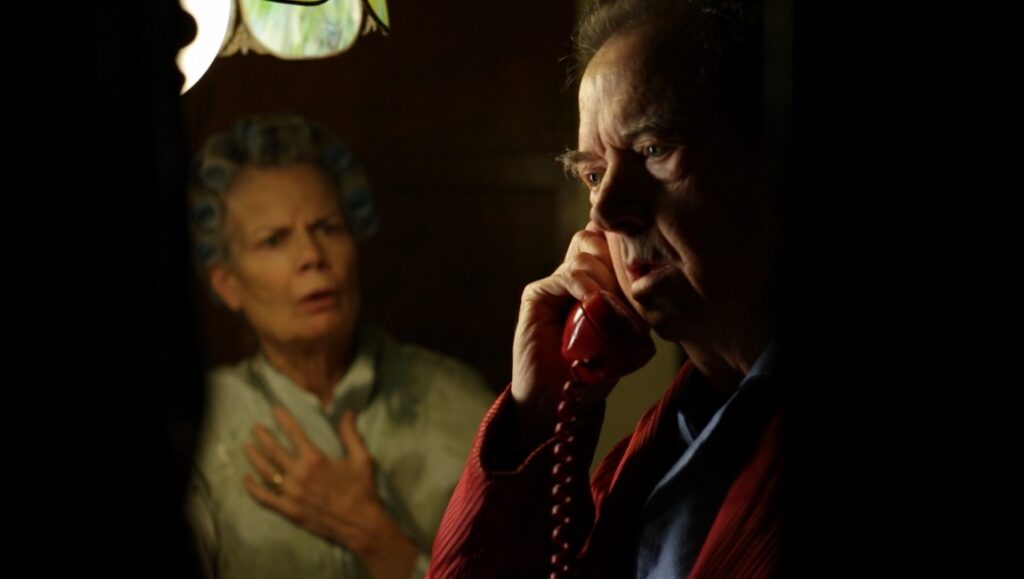What do a master spy, an ornithologist, and a bunch of regular dudes from around the world have in common? That’s the premise of Matthew Bauer’s new documentary, The Other Fellow, whose protagonists all share a name with MI6’s most notorious agent. The film opens with archival footage of Bond’s creator, Ian Fleming, acknowledging that he flagrantly lifted the moniker from one of his favorite bird-watching books. But who could have predicted that those two syllables would eventually become a mainstay of global pop culture? Many of Bauer’s interview subjects were born before the existence of the Hollywood franchise machine, and became unknowingly doomed to a deluge of ridicule and disbelief one man likens to a “plague of locusts.” Most view the association as a blessing and a curse, tediously hearing the same jokes over and over again, or dealing with endless comparisons to their suave, womanizing counterpart. And good luck trying to Google yourself.
This complex love-hate dynamic drives some Bonds to change their name and others to exploit it — or, in the case of Gunnar Schäfer from Nyrbo, Sweden, embrace it to an almost pathological degree. As a child, Schäfer latched onto Fleming’s creation as the alpha-male role model he lacked when his father abandoned the family. In his wake, Schäfer was essentially raised by 007, adopting Bond’s mannerisms, wardrobe, and bachelordom. He even legally changed his name to “Bond James,” so that he can credibly (albeit confusingly) call himself “Bond. James Bond.” This personal obsession also bleeds into his professional life, since he operates the world’s only James Bond museum.
In NYC, a theater director finds himself heralded by the local tabloids as “the real James Bond” despite being gay and possessing a “keg” rather than a six-pack. As much as he hates the inevitable media hoopla, he agrees to participate in various Bond-related stunts, including an appearance on David Letterman and a commercial for an Atlantic City casino. For him, these activities are a way to inject his own identity into a phenomenon that eclipses everyone but the Bond du jour. In another segment, various interviewees describe what it’s like having to address the police with a name that’s classic prank call fodder. In one instance, a Black man from South Bend, Indiana, is actually convicted of obstruction of justice for allegedly saying his own name in a “joking manner.” As he notes, “only the white version” of his namesake can get away with it. “A Black James Bond is doomed.” Bauer connects this statement to the racism that Idris Elba faced when being considered to replace Daniel Craig, specifically the detractors who deemed him “too street” to play the role convincingly.
But while these vignettes are entertaining in their own right, the most surprising and emotional James Bond origin story actually belongs to a woman. Escaping an abusive relationship with her young son, she eventually changes their names — take a wild guess what she comes up with — as a way to blend in and maintain their seclusion. It’s a ploy worthy of the real James Bond, and one that injects the otherwise lighthearted film with genuine pathos and suspense.
At a brisk 80 minutes, Bauer and co-writer Rene van Pannevis let the Bonds speak for themselves, and even return to Fleming and his unwitting collaborator, the ornithologist who started it all. By the time the latter’s wife Mary angrily confronts the author, the cat’s out of the bag, and Fleming’s character is well on his way to becoming a pop culture mainstay. But the author returns her stern letter with the surprising offer for them to crib his name, a fanciful twist that wouldn’t be out of place in one of his novels. As far as we know, they haven’t taken him up on the offer. But the 007 franchise shows no sign of slowing down, and the other James Bonds of the world seem to be coping with their secondhand infamy. But please, don’t ask them, “shaken or stirred?” They might respond with their own license to kill.
Published as part of InRO Weekly — Volume 1, Issue 7.


Comments are closed.